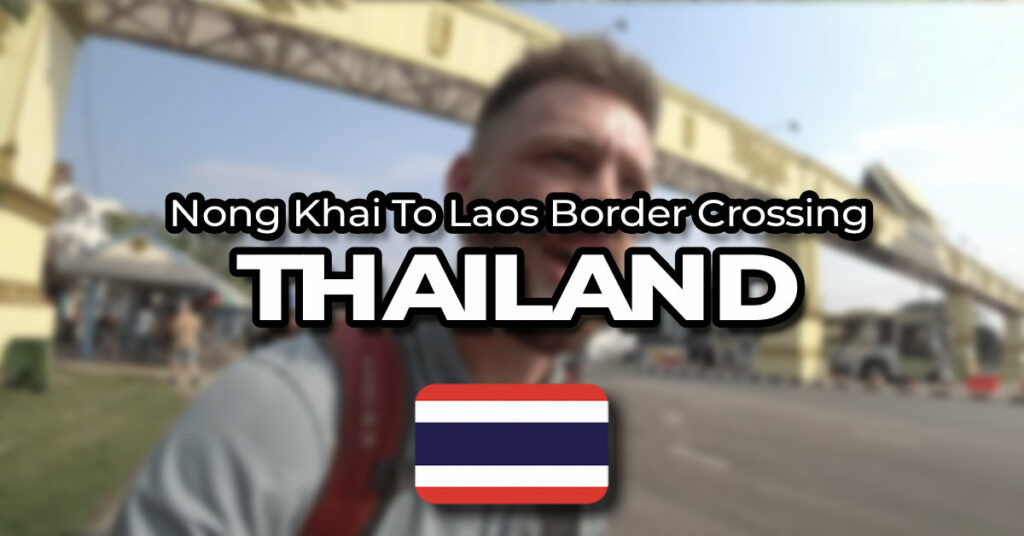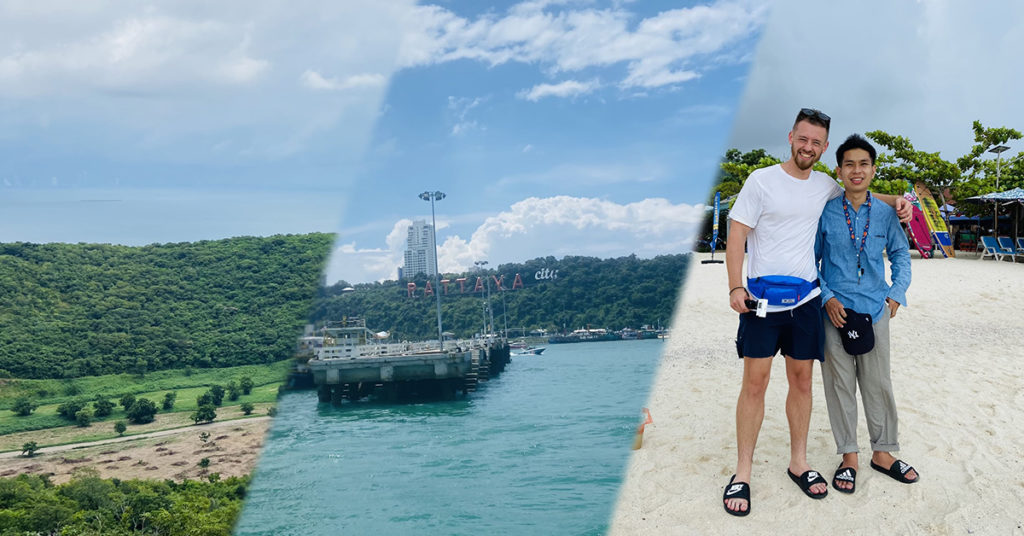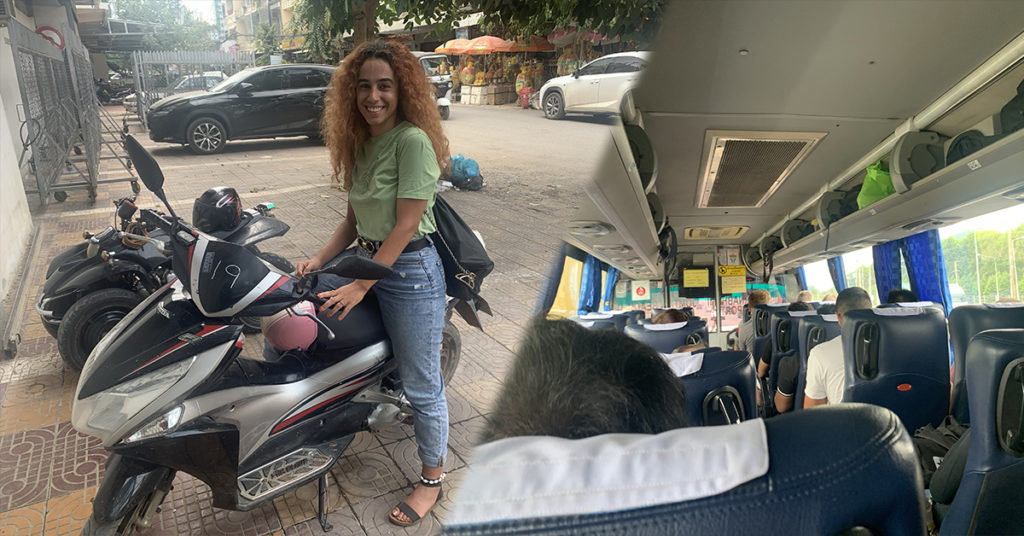So, you want to travel to Laos and experience Vientiane? Well luckily for you, Nong Khai border crossing is located just 2km from the great capital of the Lao Democratic Republic. In this article, we’ll explain everything you need to know about crossing the border at the first, ever Thai/Lao friendship bridge. You’ll also learn some interesting spots to check out in Nong Khai before you head off on your journey into Laos. Why trust us? We’ve crossed this exact border twice and into Laos from different points in Thailand 3 times.
Our video travelling through a forgotten past, searching for the forgotten camp of war, while crossing into Laos using the exact border listed in this article.
How To Get To The Border
This will assume you’re in the North Eastern part of Thailand (Isaan), or Bangkok, as any other part of Thailand makes this border a bad choice in terms of cost-effectiveness and time. If you want to learn more about border runs in Thailand and have a complete list, please check out our dedicated article to this.
You can get to the Nong Khai border checkpoint in 3 ways using land (if you are flying, you might as well just fly to Laos):
- Train (best option) – from Bangkok, 9hrs, 300 baht non-AC, 500 baht AC, 800+ sleeper
- Bus – from Bangkok, 11hrs, 400-500 baht
- Private van/taxi – from Bangkok, 8hr, 4000-5000 baht
You could additionally rent a car or bike and travel yourself to the border. If you need to get to the border fast, a week’s car rental will set you back the same amount as a taxi and you’ll have the convenience of having your own car. You cannot take the car into Laos, but if you are coming back, it can be a good option for convenience and the price is decent.
If you are travelling from a region in Isaan such as Khon Kaen, Udon Thani etc. you will pay a lot less for travel to Nong Khai. It is about half the price of those listed above.
Once you arrive at Nong Khai, you can get a Tuk Tuk for 20-30 baht to the checkpoint. After this, walk through immigration and take the bus the other side across the friendship bridge.
What Do I Need To Cross? (Short Checklist)
Here’s what you need to cross the Nong Khai friendship bridge (and all other bridges in Thailand to Laos):
- Valid passport, with your tourist visa stamps (if you get a new passport, you need to make sure your stamps are moved over – I learned the hard way)
- Passport-sized photos (used for visa application)
- A pen (although they provide pens here, they’re usually all taken and there’s 3-4 pens for 100s of people)
- $30-50 USD (This is for visa cost, some countries are exempt, & bus the other side, it’s better to have this amount in baht or kip)
- 60-100 baht (This is for the buses either side, both cost 30 baht at time of writing)
You may need some extras if you are taking goods across or are working in the respective countries, but for the average tourist, this is all you need to cross the border.
How To Cross The Nong Khai Friendship Bridge
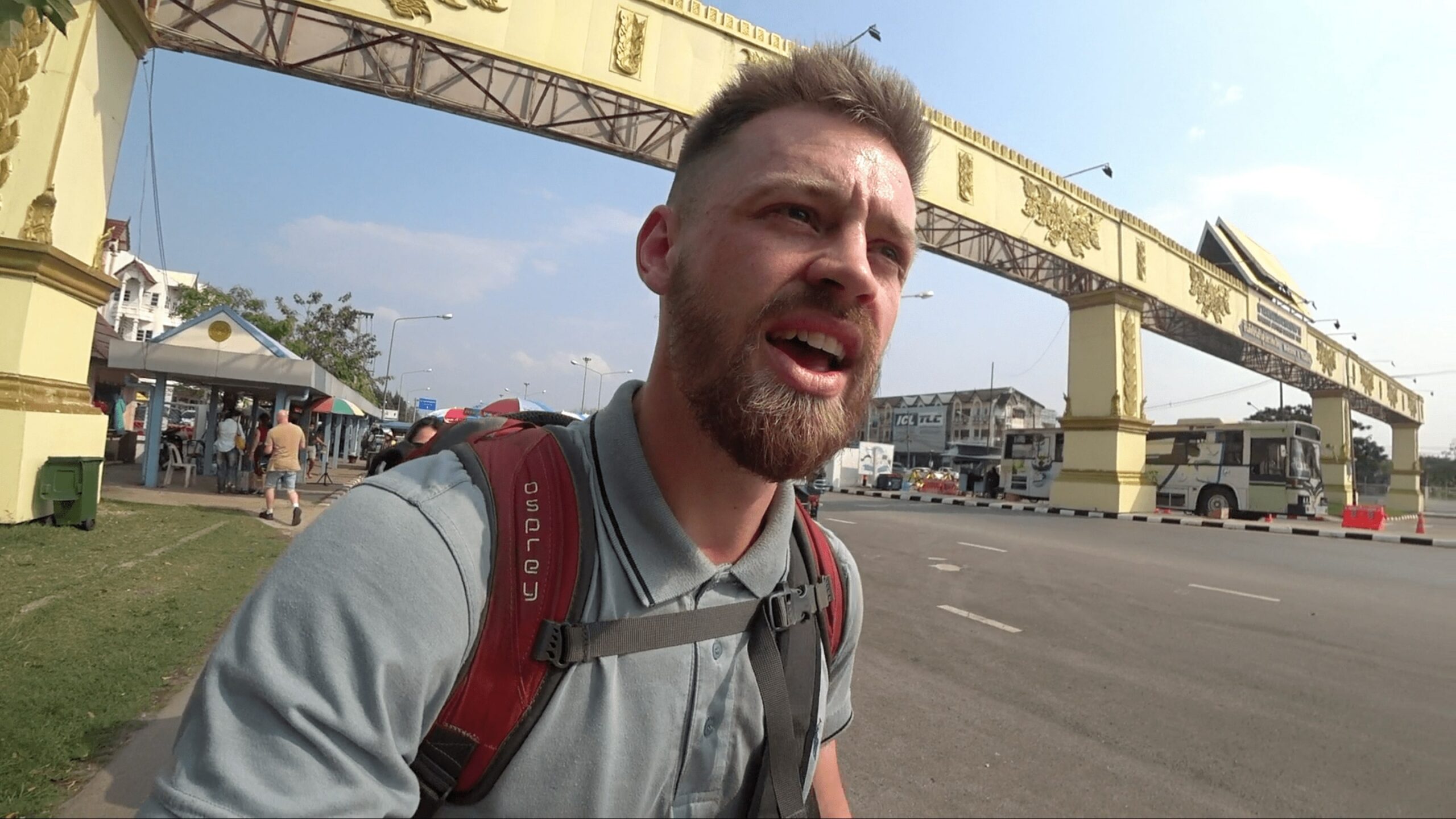
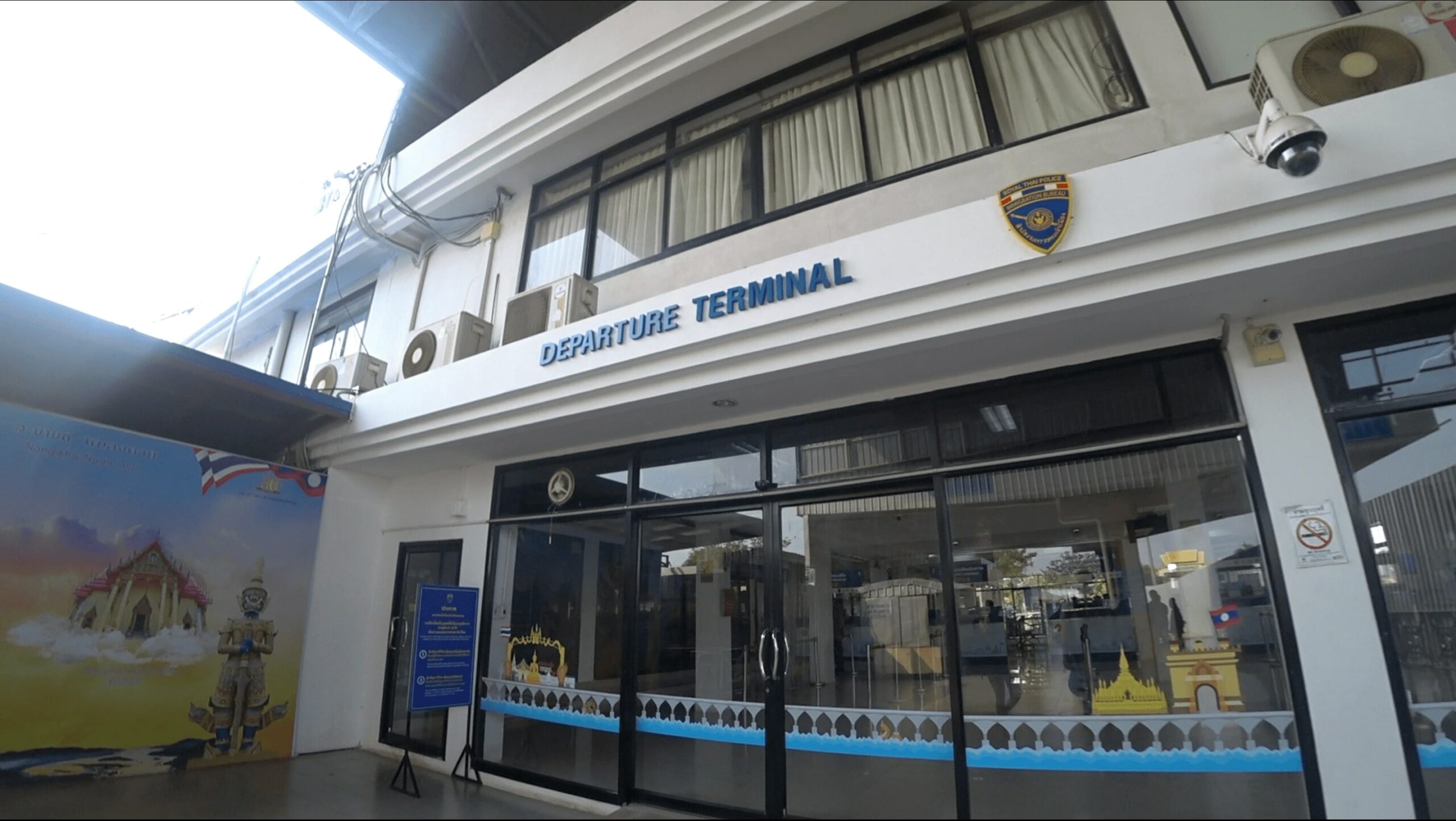
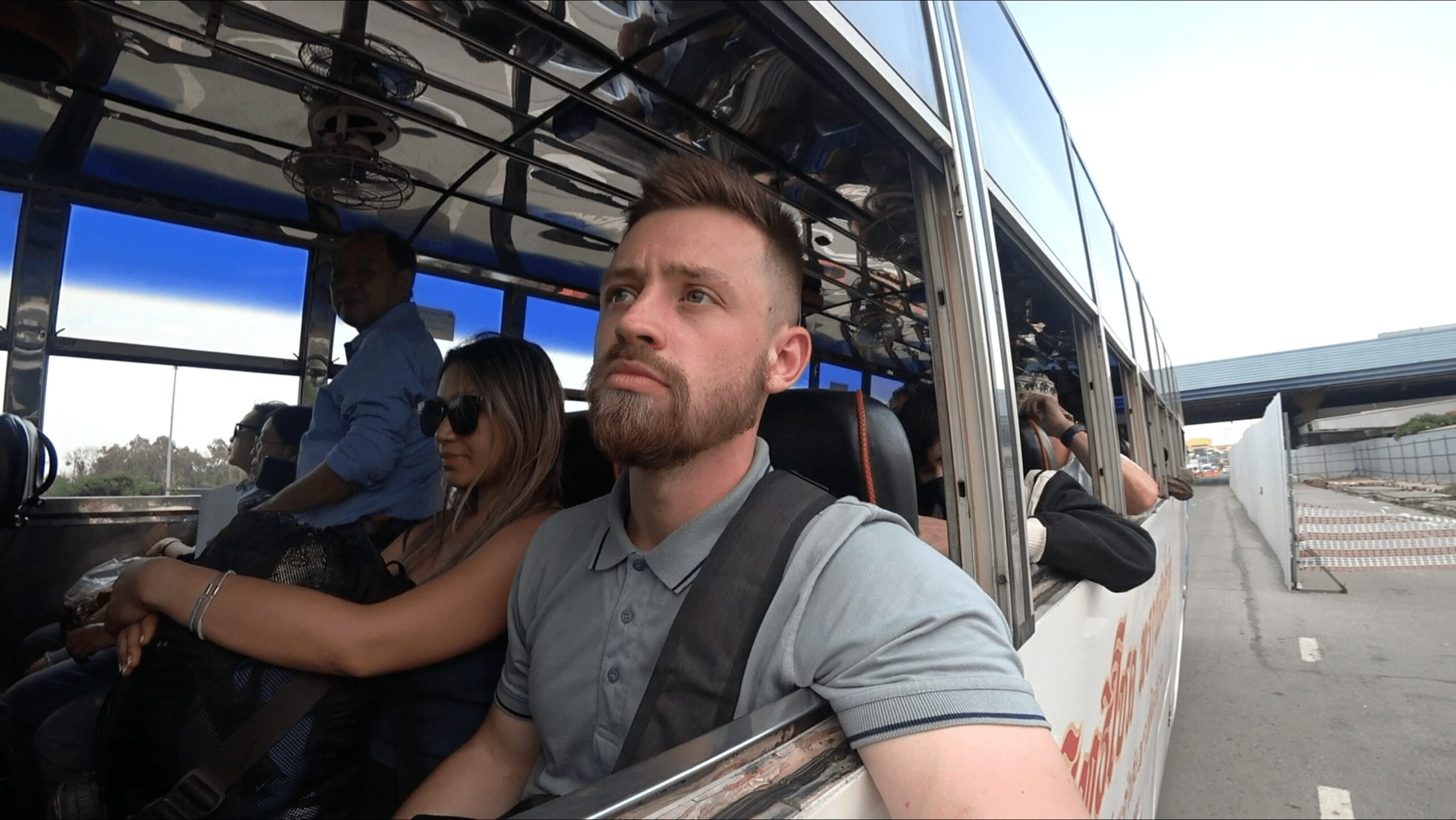
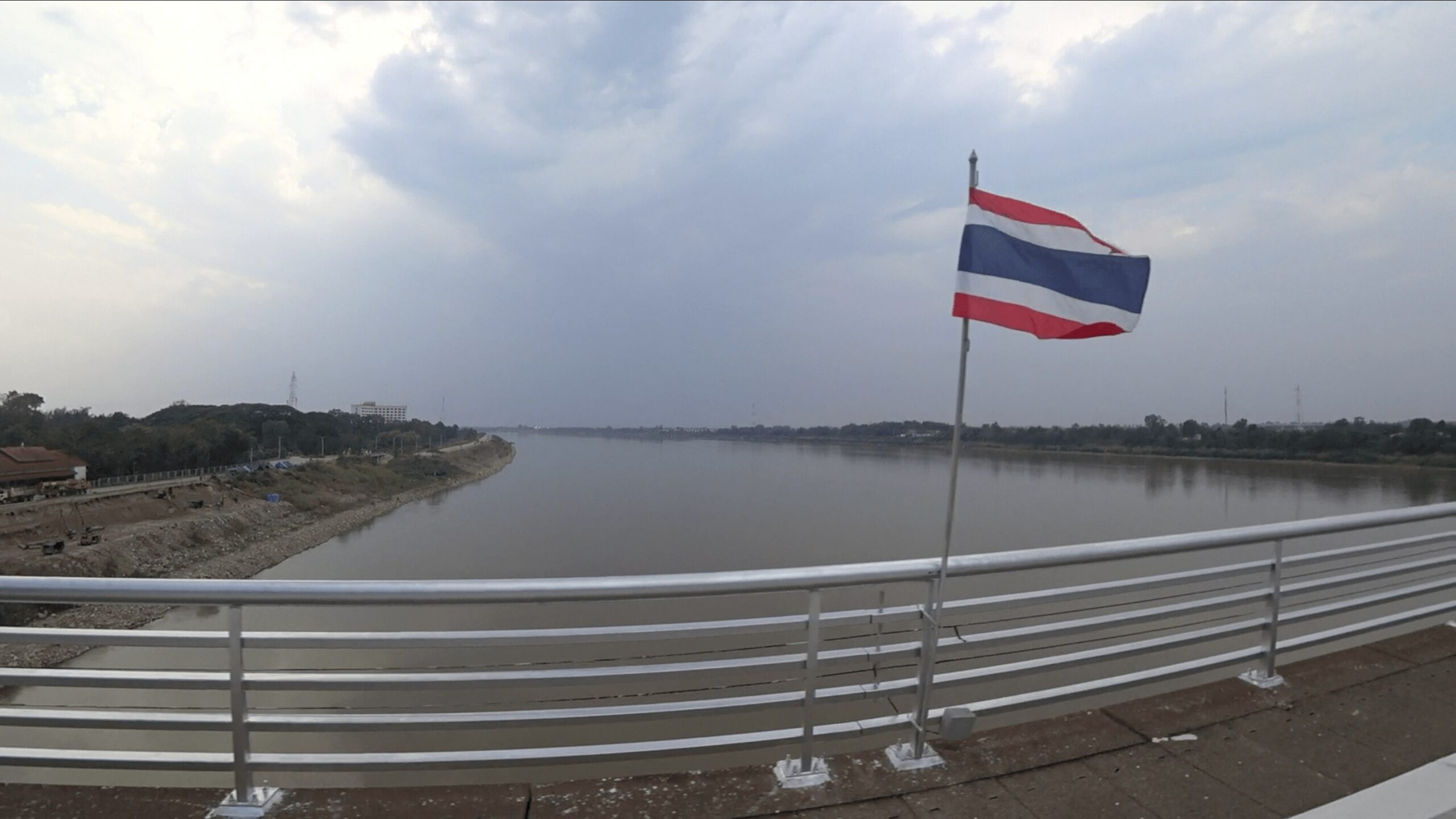
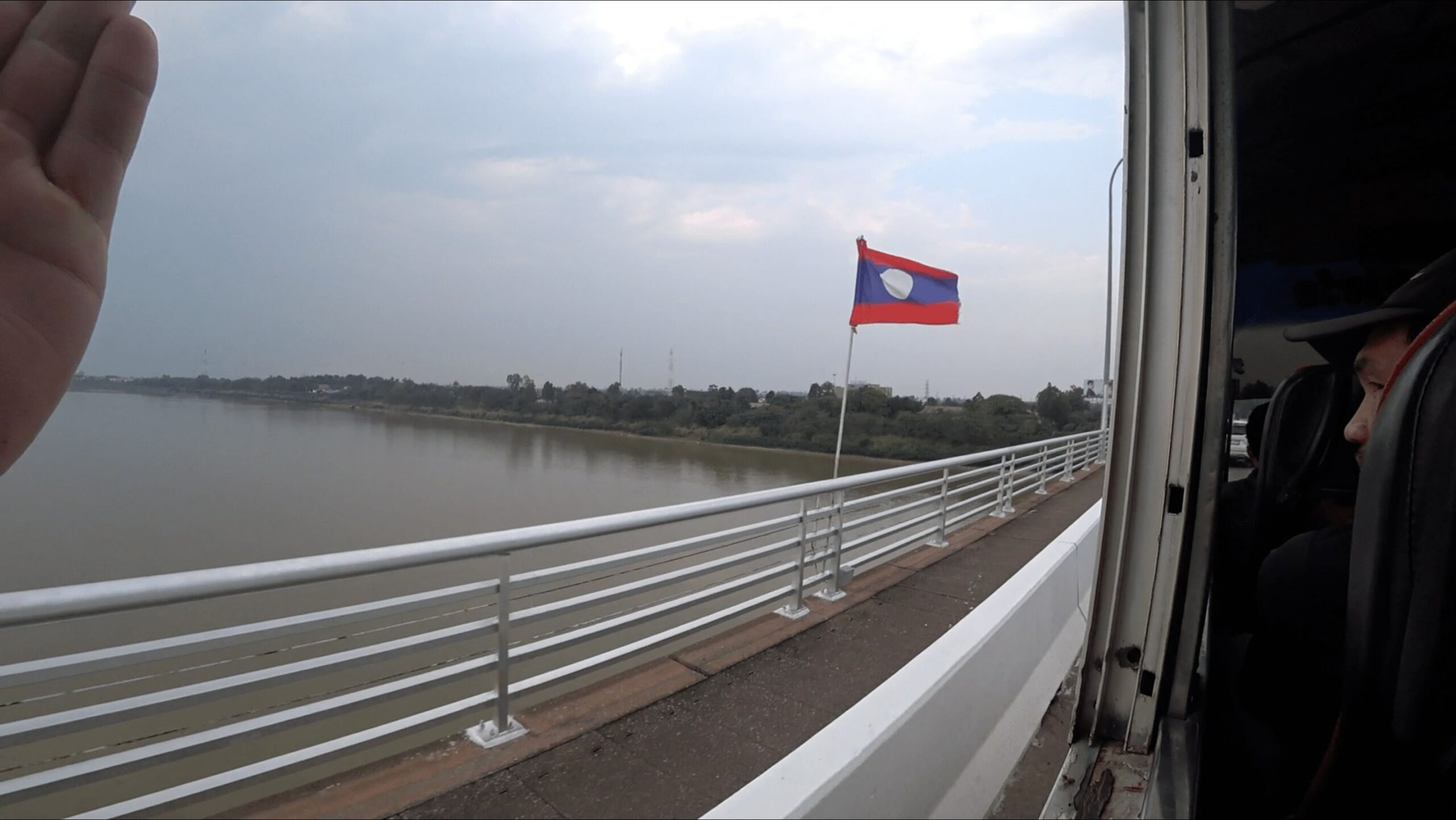
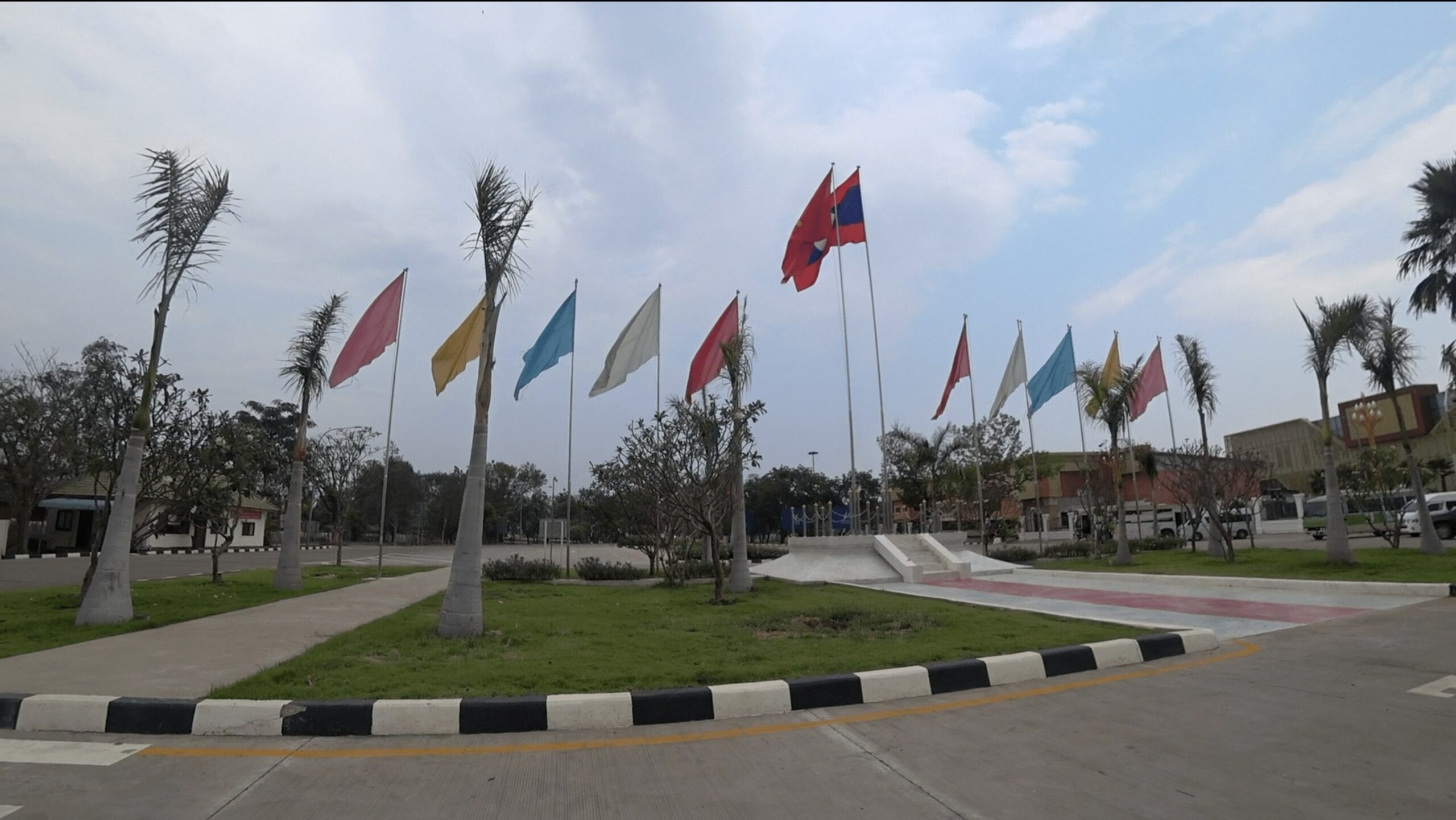
Crossing the Nong Khai bridge is pretty simple. First, you’ll need to arrive at the border. If you’ve arrived at Nong Khai bus or train station, simply take a taxi/Tuk Tuk to the border checkpoint. This should only cost 20-30 baht (some will try charge you more if you’re a foreigner, but locals pay 20-30 baht for this trip, it’s up to you whether you’d like to barter or not).
After this, walk to the border checkpoint. This is on the left-hand side from the entry to the border checkpoint (this is the large yellow gate at the front). Once you arrive here, Thai immigration will stamp you out. I was here for about 1-2 minutes while they did this. After, you’ll walk through to a seated area, and a booth – you want to walk up to the booth to purchase a bus ticket (30 baht) to take you across the friendship bridge.
Once you have crossed the bridge, at the Lao side you’ll need to fill out some entry and exit forms (keep your exit form in your passport for when you leave the country). Here, you’ll also need a passport photo to be included with your forms. After filling it out, head to the booths with the sliding doors for windows, hand the immigration officer your forms, passport, passport photo, and 1800 baht.
If you have change they will give you the change once the process is complete.
They will check your forms, and you’ll be instructed to wait at the right-hand side of the booth (corner). After it’s checked, they’ll call out your name, check it again, and then (if all is good), they’ll stamp your passport and you’re through!
When you’re through, walk to the other side of the border, ignore the taxis and Tuk Tuk drivers, and head straight to the bus. You’ll see the bus parked on the road, about 50m away from the exit/plaza area, on the right-hand side as you walk out. The cost of a ticket is 30 baht at current time of writing, and the bus will take you directly to Vientiane bus station. From here you will have to get a taxi.
Beware: taxi drivers and Tuk Tuks will tell you the wrong price of the bus so that you’ll consider getting in a taxi with them. They price the taxis at 400 baht to the centre, but will drop as low as 200 baht. If you don’t want a taxi, and would rather spend less on the bus (it’s an AC bus) then ignore them and walk straight past.
What To Do In Nong Khai Before You Leave
Nong Khai is like most small border towns, there’s not a great deal around to see, but unlike most, there are some absolute gems you shouldn’t miss before you cross and when you know the historical importance of these places it becomes a far more interesting visit.
Remnants From The Lao Civil War & Indochinese Refugee Crisis
There isn’t a great deal of information about this (unfortunately). However, from 1975-1992, Nong Khai had the 2nd largest refugee camp for Lao, Hmong, Tai Dam and other ethnic tribes fleeing the new communist regime just across the river. Many fled across the river, either swimming, or using small boats. Some took huge journeys that would take days, with many of the original group who left dying on the way, or succumbing to the river’s currents.
Nong Khai refugee camp held up to 24,000 refugees at its peak, and was finally closed in 1992. Now the original location has been turned into a peaceful technical college.
Now I’m not sure if they’ll let everyone in, but I spoke to the guy at the gate, told him I was making a video about the history and he seemed to let me freely roam around the grounds. There are a few small monuments and temples. I’m not sure if these are to remember the people who were here or not.
Top tip: there are no plaques to explain anything about it, however, there are some people who are very interested in the history around the area that will be able to help fill in the gaps for you. One of them is the owner of Mut Mee Hotel. If you stay there, or grab some food there, she’ll be able to help you understand the history more.
I spoke to this lady personally, she was very friendly and happy to help a foreigner figure out the weird, difficult past this place holds. As you’ll see in the embedded video (at the top of this article), she explained to me that on the hotel grounds is an old bunker (now a straw shack) that:
the Thai soliders used to shoot at the Lao trying to kill their own people fleeing
She also brought an interesting sculpture park to my attention that a man called Bunleua Sulilat built when he had to flee Laos as the political tensions got worse in the country.
Sculpture Park (Sala Keo Kou)
video time-stamped to sculpture park part
As mentioned above, this was built by a Thai/Lao man Bunleua Sulilat, who, after starting the original project Buddha Park in Laos, had to flee to Thailand when the communists in Laos won. Here in Nong Khai, he built hundreds of sculptures, and a temple all themed on the Hindu & Buddhist religions, taking some influence from Islam, using dome-like shapes for the temple, but a Hindu and Buddhist interior.
If you’re planning to visit Vientiane I’d recommend going to both parks on either side of the Mekong River.
She also mentioned (not sure how true it is as there are no sources online, but interesting nonetheless) that there’s an interesting myth/legend surrounding this park, which says, Bunluea carved a curse into one of the great sculptures seen when entering the park, damning a Policeman who investigated him, asking why he was in Thailand building the park.
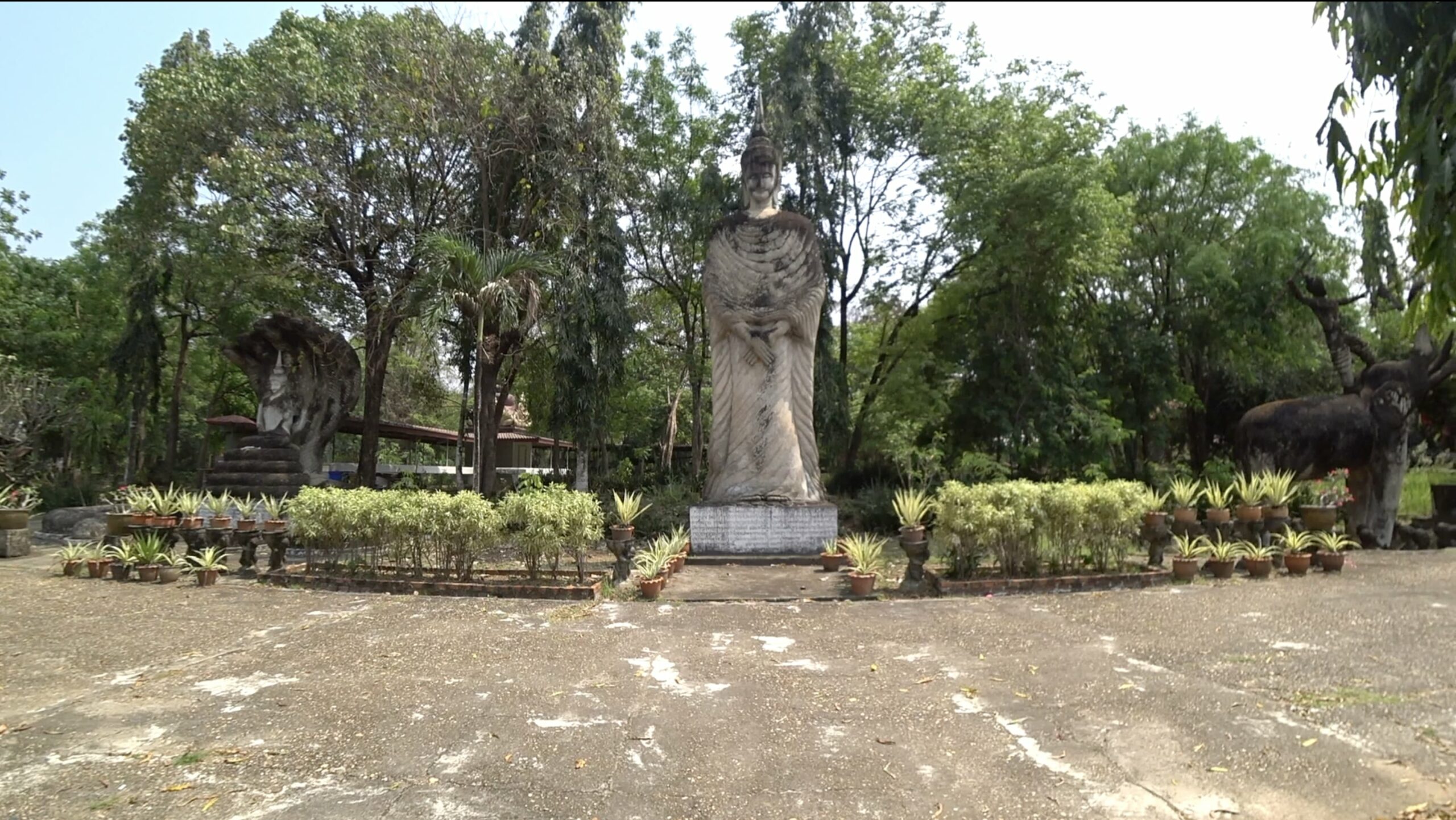
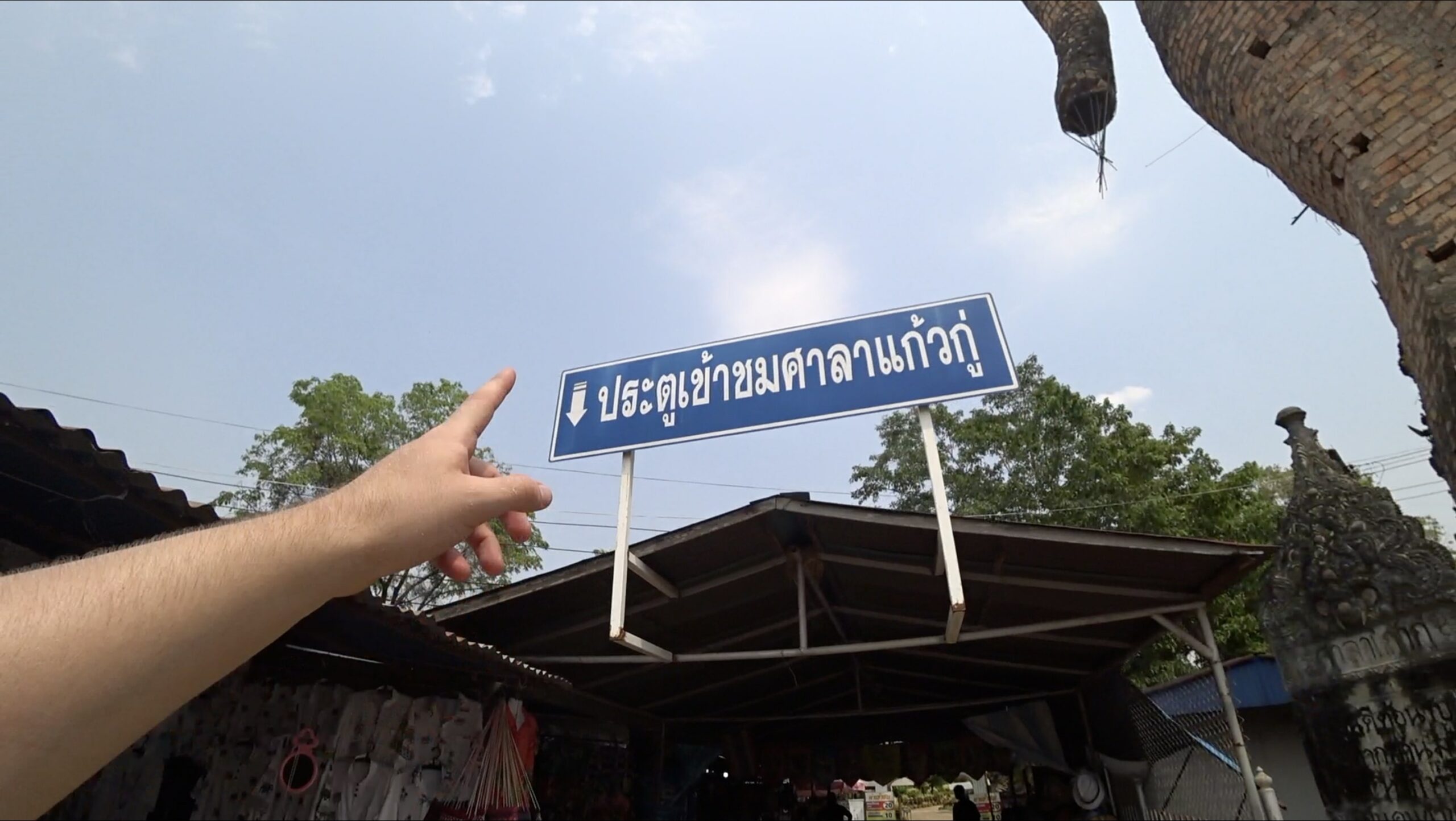
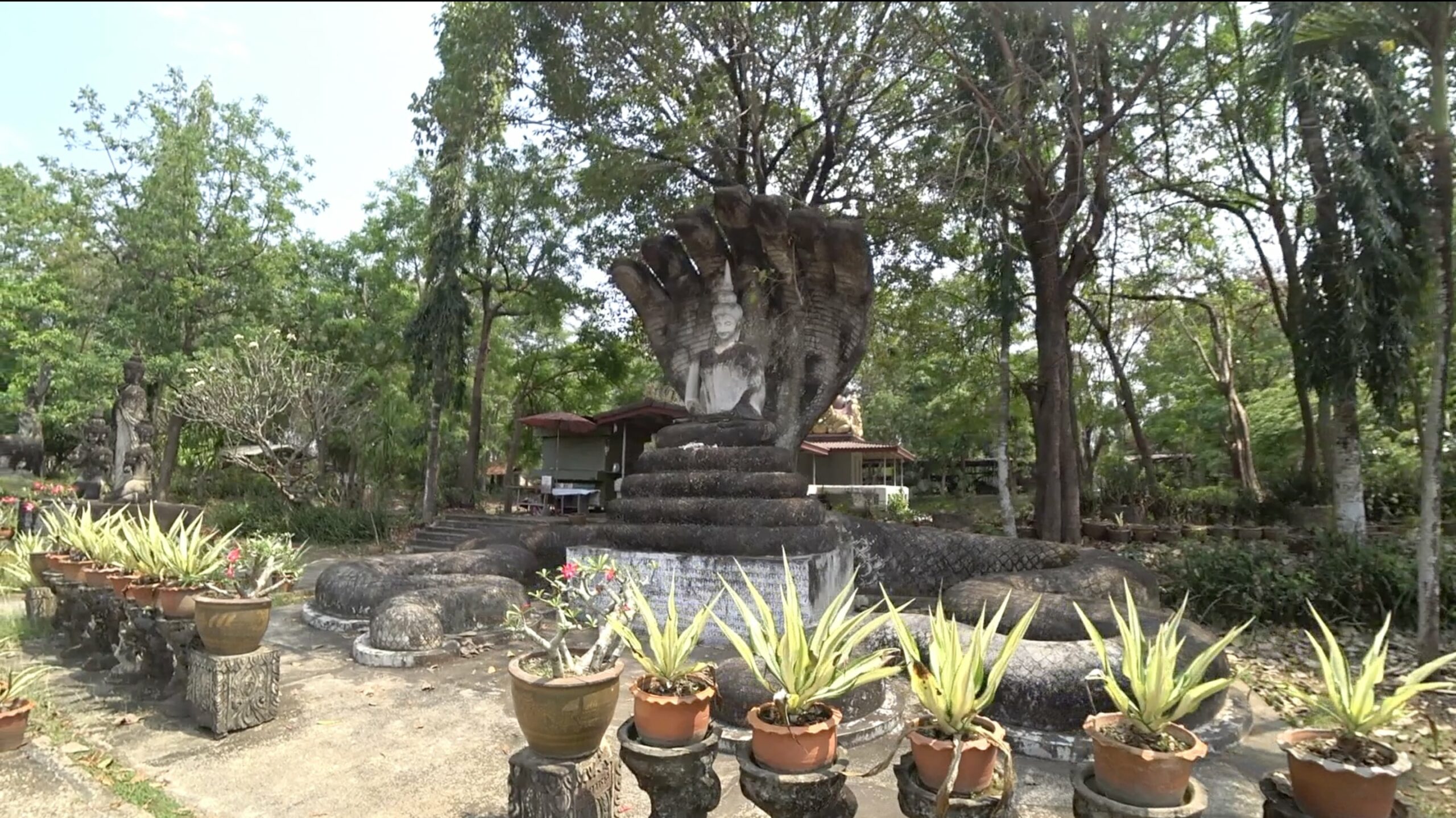
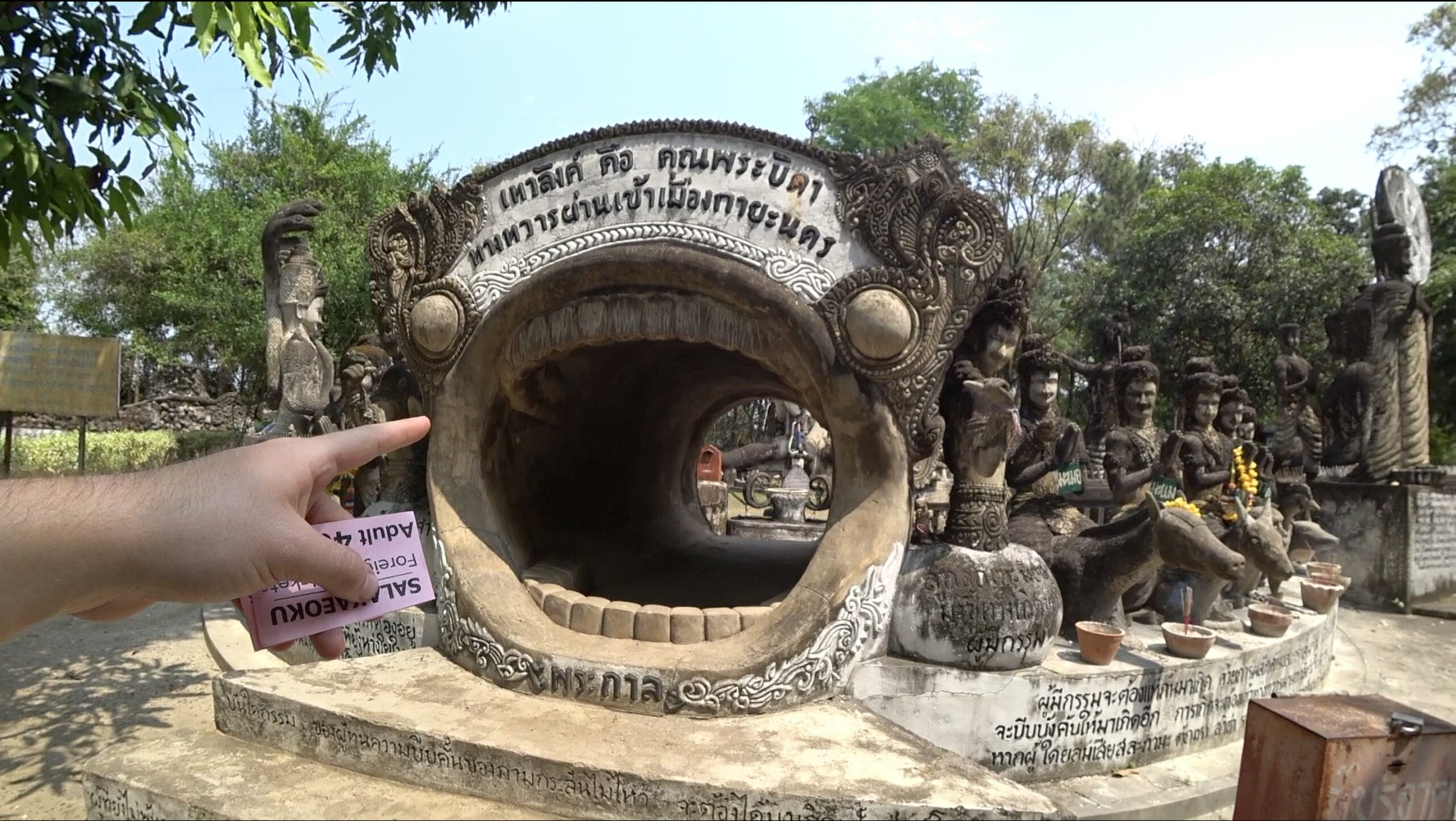
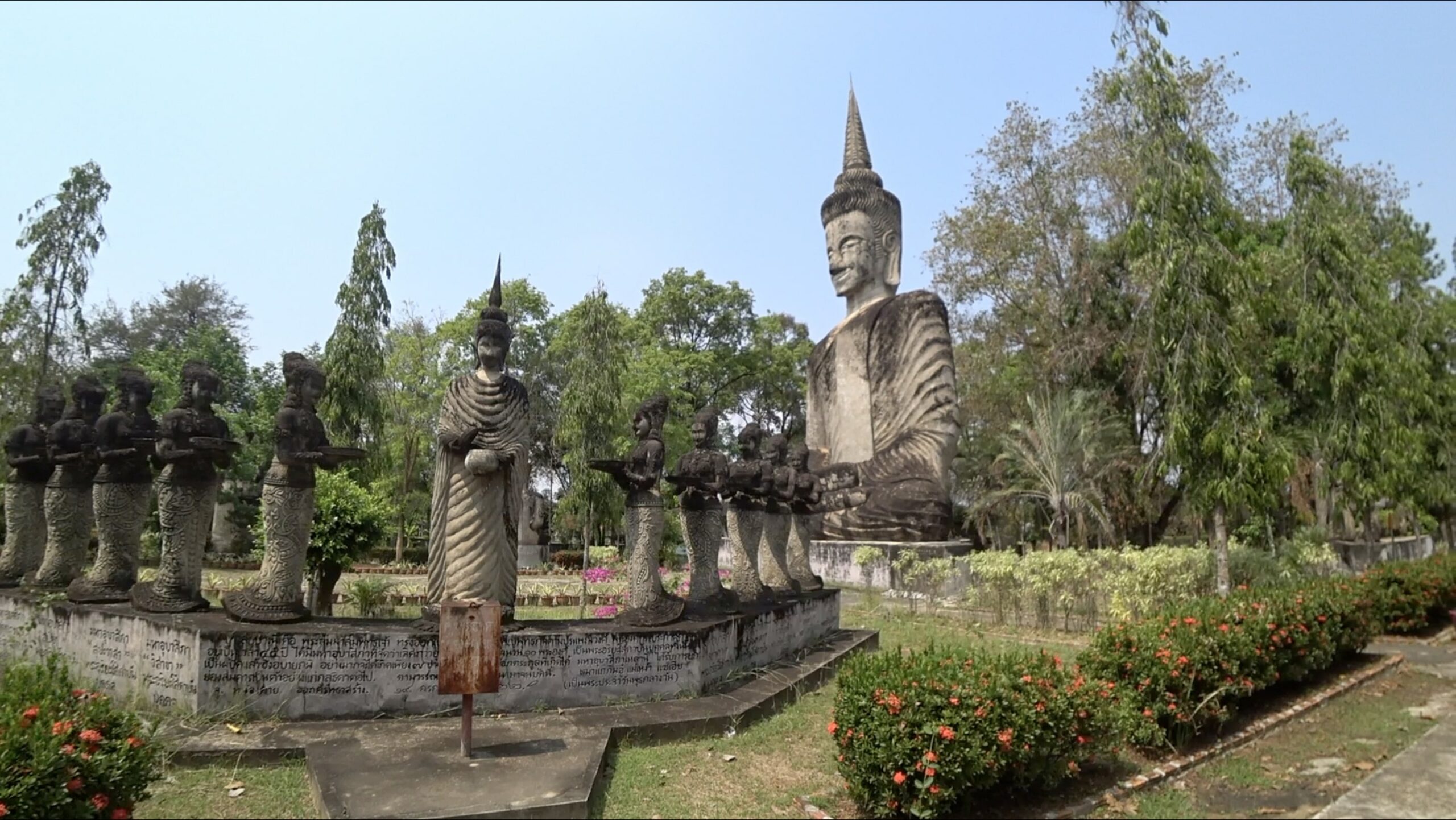
Due to the political tensions around the time, it’s said that a Policeman thought he was an alien (despite being born in Nong Khai) and questioned him about the park due to the legality of foreigners building in Thailand.
He died here in Nong Khai, in 1996, and was laid to rest inside this grounds, mummified on the 3rd floor of the temple. You can see his body through a door in a dome-shaped coffin.
The Holy Relic Stranded in The Mekong
At a temple named Wat Phrathat Klang Nam, there is an ancient stupa (a dome-shaped structure that’s used as a Buddhist shrine) that eroded and fell into the great Mekong River in 1847. Here, by the temple, you can still see the ruins during dry season (March – September) poking out of the water. Legend has it that it once housed 9-foot bone relics.
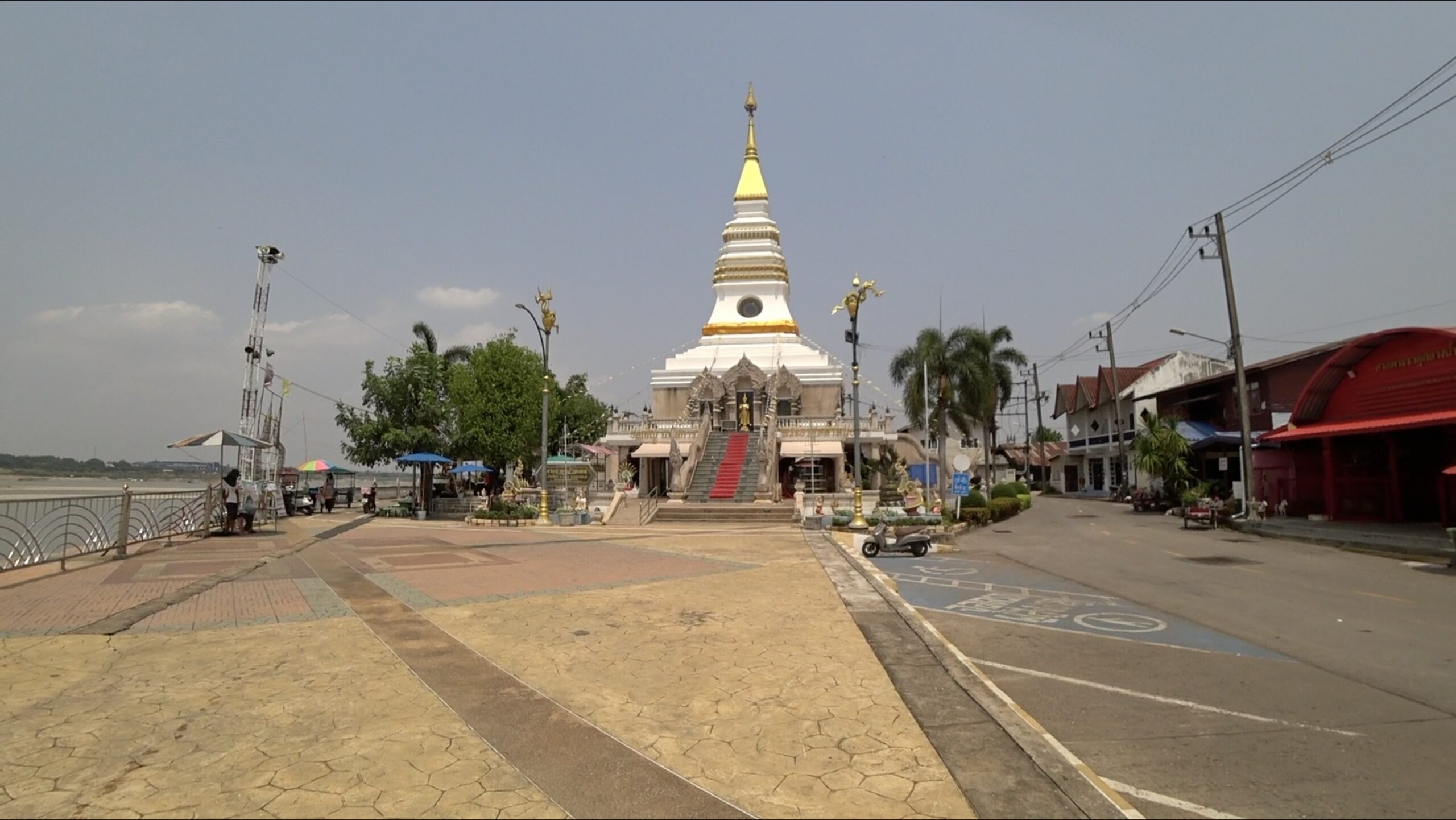
There is also a beautiful temple here that you can look around, then stare across the river and envision just how hard the journey across that great big river gap must have been for those fleeing their homes in 1975.
River Boat Cruisin’
By the Holy Relic, you can also get river-boat cruises along the river. Personally, I didn’t do this, but a guy came up to me offering it while I was there. He said the cruise takes 2 hours and it takes you along the river. Here you can see into Laos and get a closer view of the relic shrouded by water.
Sadet Market, Walking Street, Big Buddha & Naga Statue
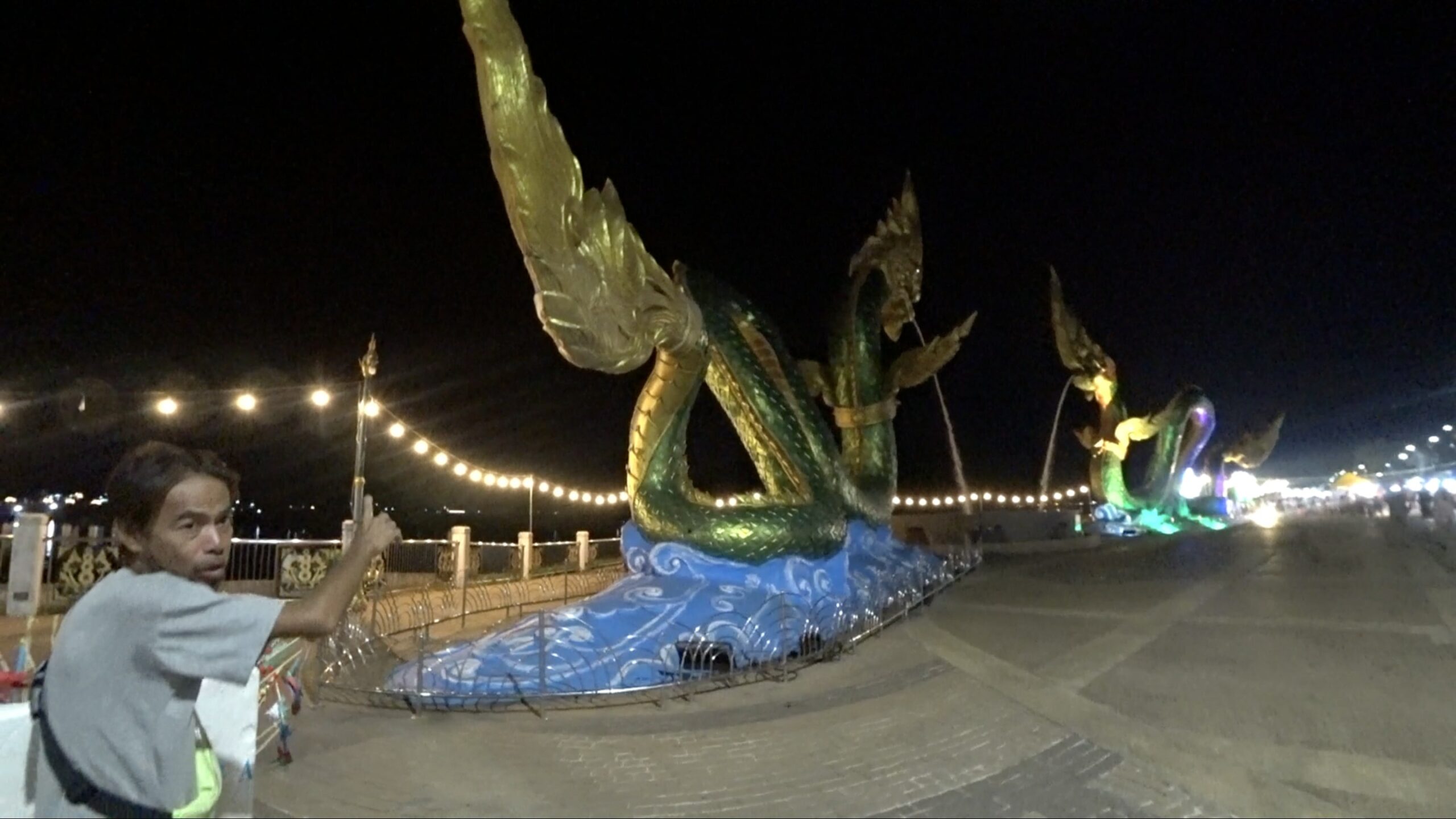
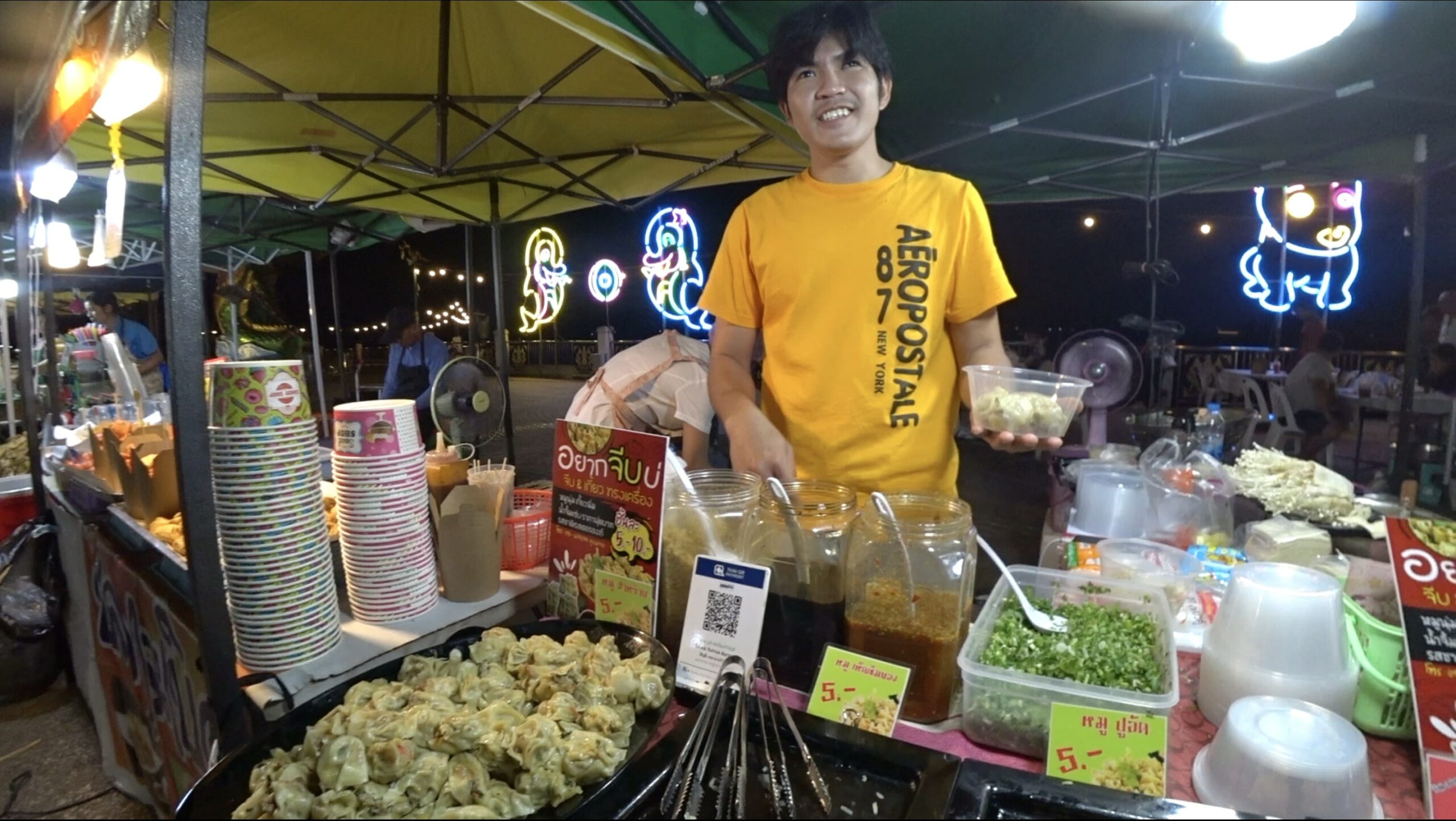
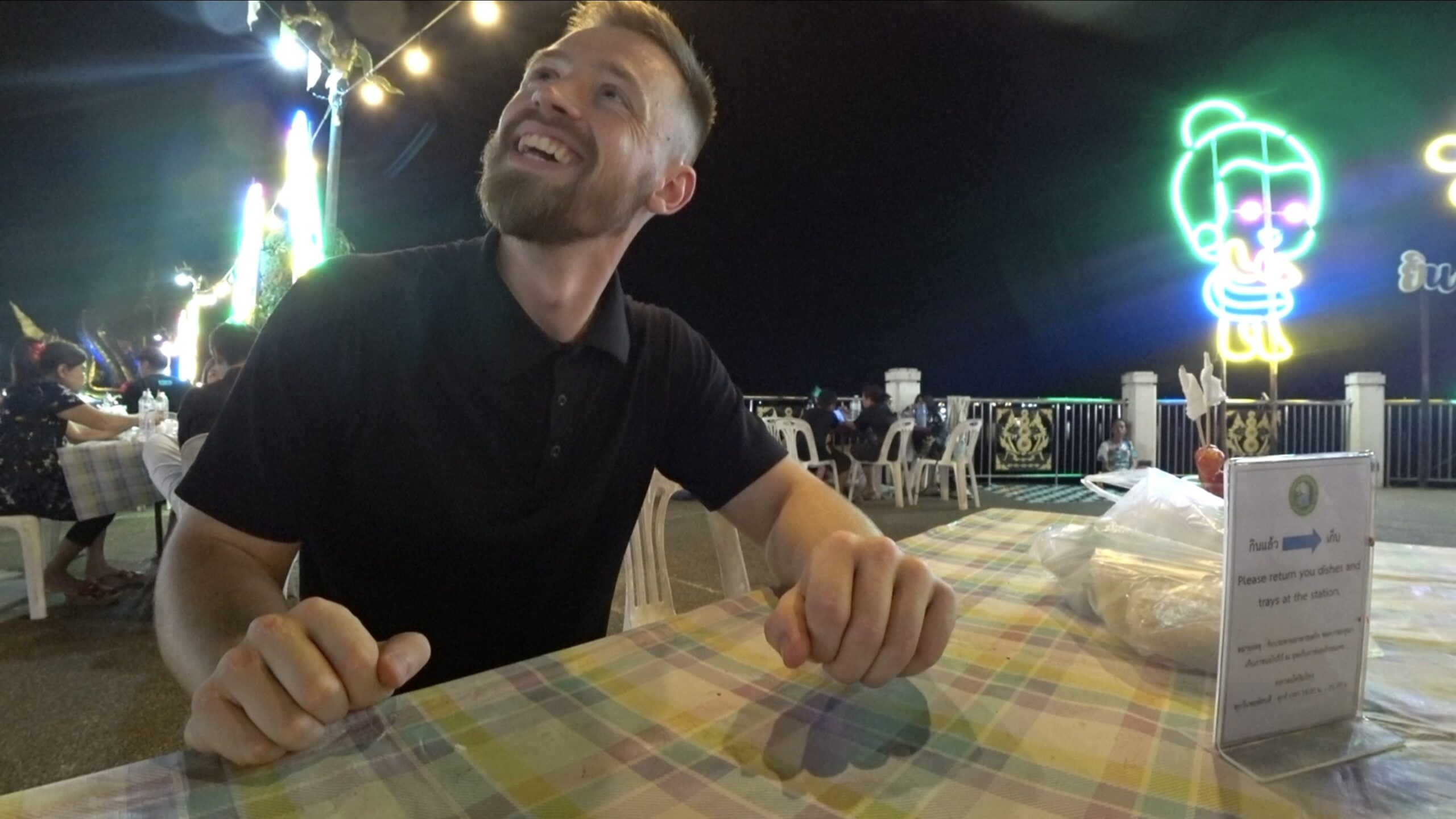
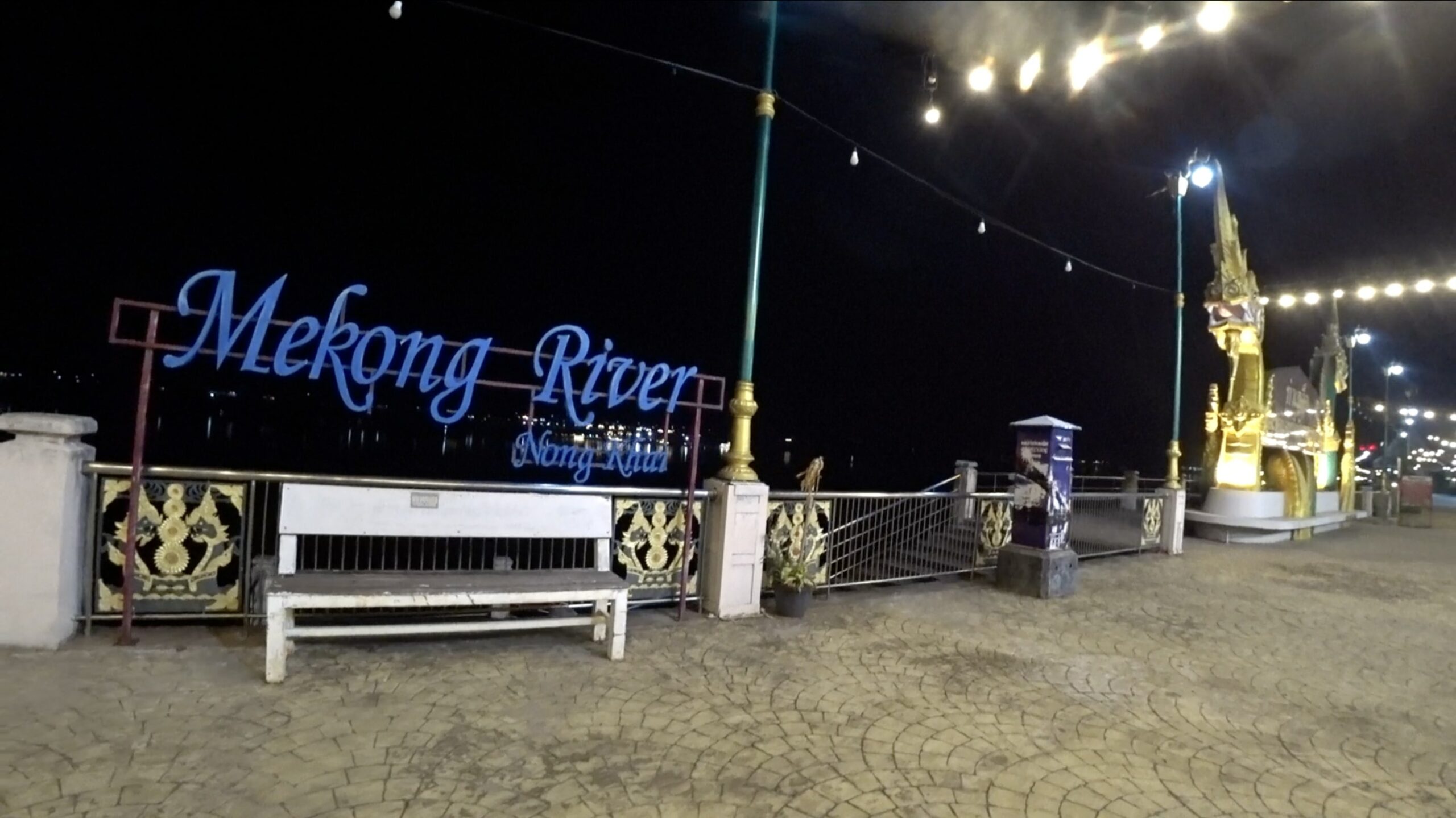
Like most border towns, there are huge markets here. The walking street market is absolutely massive and there are all sorts of treats and delights you can get stuck into while sitting by the river on the provided, free seating area. Here you’ll find local music playing, decorative lights, a great big statue the Naga deity: a half-human, half-cobra who is said to live in underground worlds with palaces, gems, trinkets etc. and a huge statue of a golden Buddha that looks across the Mekong into Laos.
During the day there is also a fish market, and other markets which sell local goods.
Renting A Bike
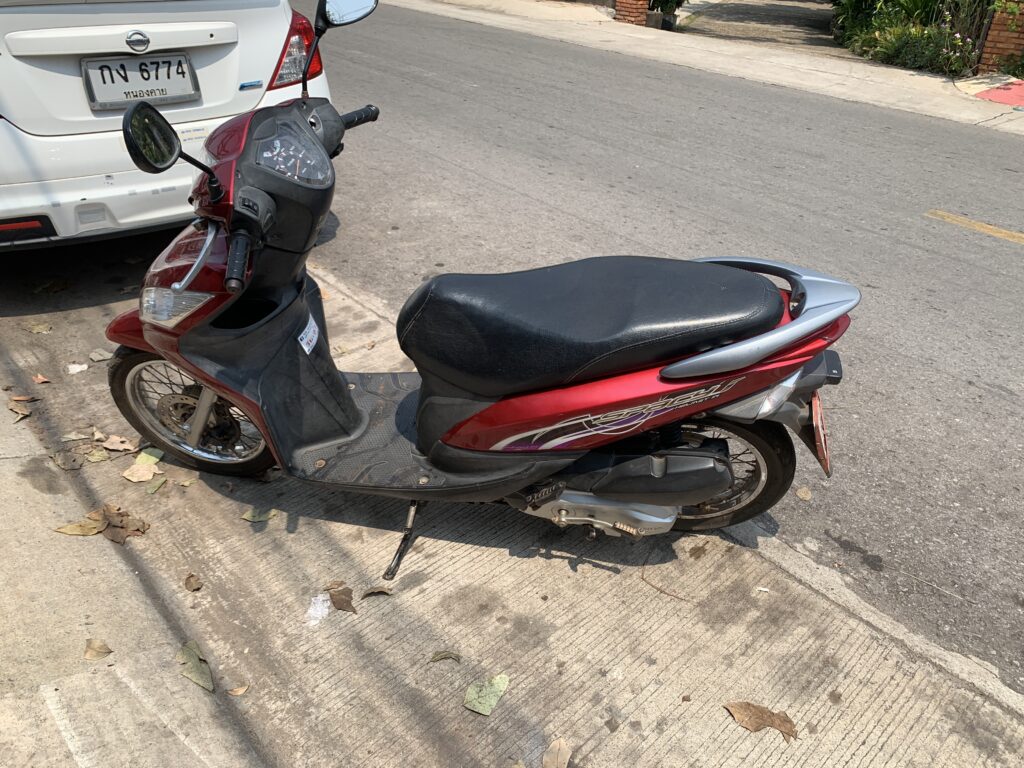
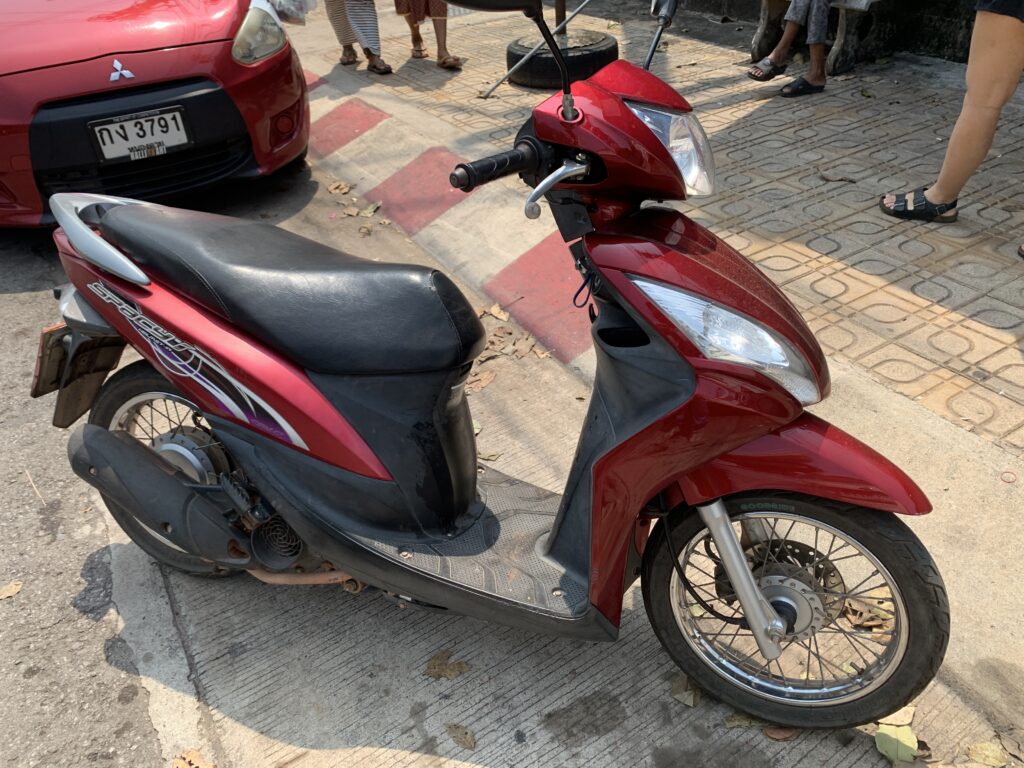
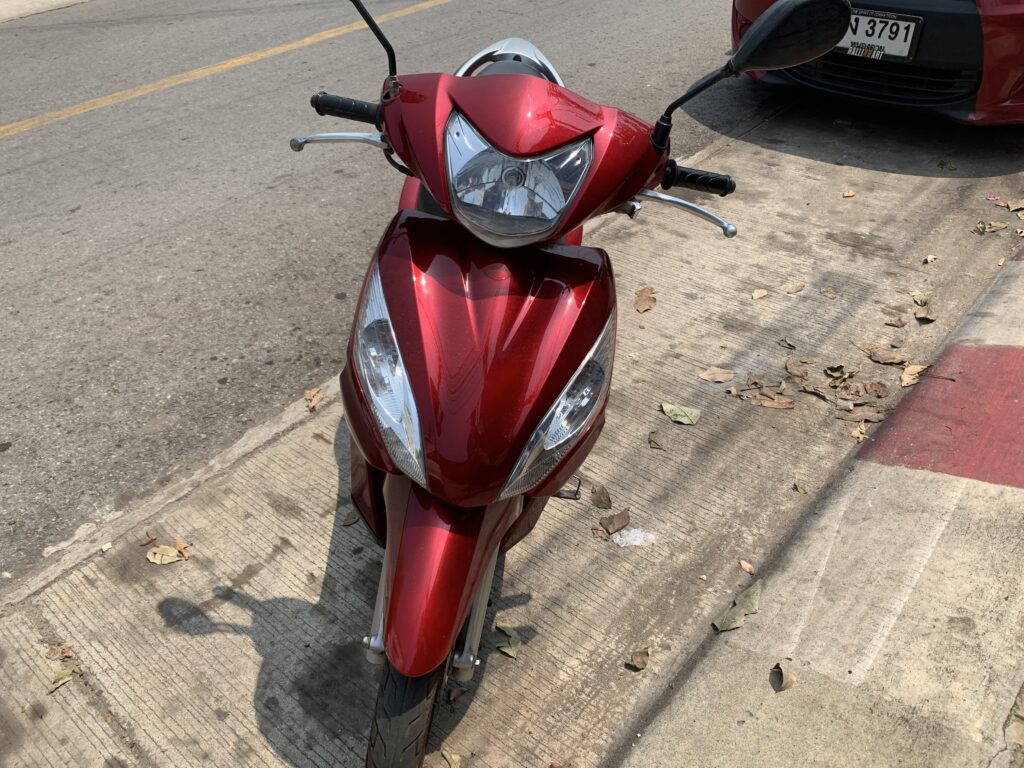
There seems to only be one motorbike rental place that’s accessible. The rental cost as of writing is 200 baht ($5.50) per day. It was a decent rental for travelling short distances, but if you want to go further, the bikes provided weren’t in great condition. Many times the bike wouldn’t restart and you had to rev the engine while pressing the ignition to get it going.
Speedometer didn’t work, brakes were OK… the usual stuff for cheap rentals like that.
Great guy running the place, and allowed us to leave the bike at the border with the keys locked in the boot. He picked it up from the parking spot it was left at later on, and it gave us a nice ride to the border before crossing.
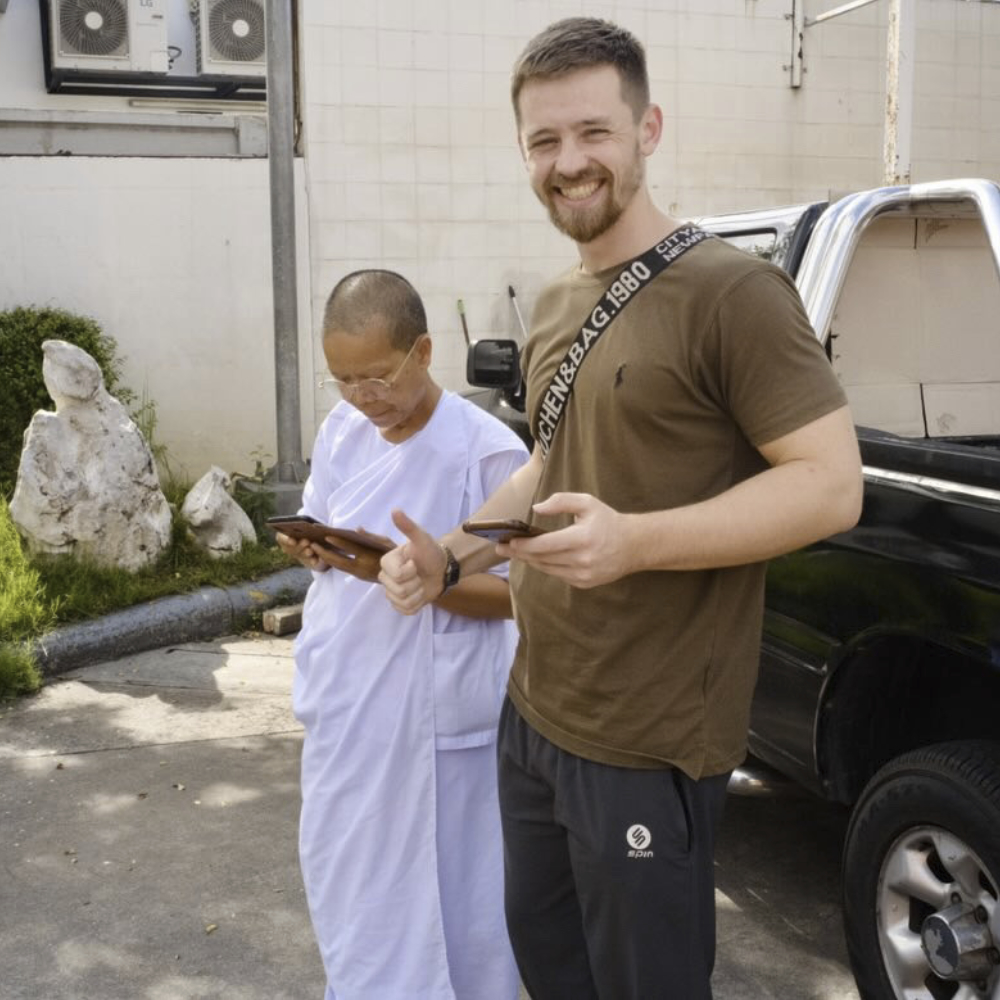
I’m Harry – and I was tired of the same old “10 best places I’ve never been but I’m writing about for some reason” blog posts. So… I’m a young traveller on a mission to travel the world and share my true, unfiltered experience, including all the gristly details. From packing my life into one bag for a year, to traveling Vietnam by motorbike, to sorting out Visas for specific countries – I’ve done it all, am doing it all and only give my advice on things I have done – not regurgitated cr*p from another source *cough* most publications *cough*. So bear with us! This project will take some time to grow, and will take a fair bit of money. But I’m determined to make it the single best source of information about traveling on the internet.
